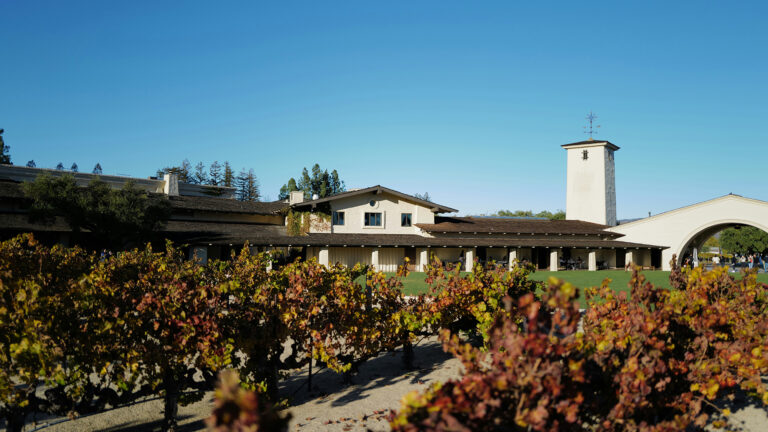By Christine Giordano
Co-investments continue to be hot news. When BlackRock
bought Global Infrastructure Partners as a game changer in January for $12.5
billion, it got some of us curious about pension funds that have taken
co-investing to their in-house investment teams, and whether there was advice
to be shared.
The $325.9 billion [as of January 31, 2024] California
State Teachers’ Retirement System‘s (CalSTRS’) famed
Collaborative Model has reportedly saved $1.6 billion over five years. Scott
Chan, deputy chief investment officer of CalSTRS, has been building the program
since the first year he started at the mega fund in 2018 when CIO Christopher
J. Ailman made it one of Chan’s priorities.
It has long
been said that large pension funds usually make changes the way large cruise
ships do – turning slowly to accommodate for their size. Smaller foundations,
endowments, and family offices are sometimes envied for their ability to act
quickly and nimbly. Yet despite its size as the second largest pension fund in
the United States, a large piece of CalSTRS co-investment formula is the
investment team’s ability to act swiftly and nimbly in the face of opportunities
— swift enough to keep GPs satisfied and
calling. And to find those opportunities, like new investments in geothermal technology, that will pay off in the years to come.
In this interview, we’ll discuss what needs to be in
place to be responsive enough to GPs to keep offers rolling in and frame the
program with enough due diligence that investments remain prudent and
successful.
Chan was not new to co-investments when he arrived at
CalSTRS. He had already been a chief investment officer at Sacramento County in
California and a senior managing director at UC Regents.
Chan discusses how he and the
investment team at CalSTRS built the program, how the investment team gained
alignment with the board, and what guardrails needed to be in place to keep it
successful, what investments in the new economy seem promising.
Christine Giordano: Since
the Collaborative Model dictates the co-investments in the plan, let’s start
there. The first phase of the Collaborative Model was to get every
division and team to execute collaborative models in their own way. How did you
encourage that?
Scott Chan: To
step back, CalSTRS obviously is a very large organization with many parts. To
be successful, I needed to create and execute a unified vision across the
organization.
It started with the investment team and an investment
strategy to help us improve the returns. That would obviously lead to greater
work on their ends, but then we’d be at the forefront of finance and deepening
our relationships with partners.
It eventually became a Top 3 Priority of the Investment
Branch so that every division is held accountable for developing and executing
an annual business plan. These are all components that I think helped us to get
started. There were certain divisions where it was pretty automatic, like in
private equity — co-investing was a
natural extension of the model for them.
They were going to focus on that, going from the, call
it, 2.5% of NAV up to 20% to 25% today, targeting 35% in the future. It was
very natural for them. In other areas like innovation and sustainable
investing, we really needed to get examples of Collaborative Model structures
set up. We did a few of those on the private side. One of the things we did in our
Innovation portfolio was invest in a private credit manager where half of what
we invested was within the fund and half of it was a co-investment vehicle. Then
we also took some ownership interest in the fund.
Then every deal the Innovation team did after that, they
structured in a collaborative way. Part of it was just pushing that rock
uphill, making sure everyone had some examples to start with, and then I would
say, it really started to get rolling and move downhill. At this point all the
teams are clicking along in the area that is natural to them and in how they’ve
structured their teams.
In the future, of course, we want every individual in investments
to be trained and able to transact on any given structure, whether it be a
co-investment SMA, a joint venture, or ownership of an asset manager. We are
working on institutionalizing the expertise and knowledge of our complex relationship
structures and hope to have the ability to map it across any asset class. There
are different degrees of what we can do, and I would call ownership the most
intensive out of all those areas.
Historically, we’ve implemented the Collaborative
model across public and private markets. Our public markets do internal investing or direct investing in the traditional
approach and hire teams and portfolio managers to do all of the trading and
investing. We do all of that “in-house.” On the private side, we
never felt that we would be able to build our own internal Blackstone or
Brookfield, etc. The point was to try to benefit similarly in a direct way but
leverage our partners to do that in various ways and structures, from
co-investing, to joint ventures, to SMAs, to ownership.
That’s one element: building and developing the team.
Other elements that I think might be useful to understanding this are the
board, the enterprise support, and even the stakeholders. I think it needs to be a holistic vision to
truly be able to do it right.
Getting the Resources
Chan: One of the first
things people would raise their hands and say is, “Well, I don’t know if
we have the resources to do this correctly,” right?
We had to work with
the board to ensure we had the resources to grow this strategy and plan. In
2019, we accelerated our plan. We have a five-year resourcing plan. In Year Three
of that plan, we accelerated it so that we could hire the balance of the
positions within that year, and then in 2021 and 2022, we created a new plan.
Those guaranteed the resources for us to do it.
I would say that one
of the critical things for folks is to convince your board. You really have to
sit down with them and walk them through what you think will be the benefits.
Fortunately, we created a cost report under the leadership of April Wilcox, our
Director of Investment Services. (I think we do an amazing job with that.) We
essentially account for all the costs of all of our private partnerships.
Then, with that accounting, we could also slice and
dice it and start to estimate our savings in developing some of these
structures because co-investments, for example, in private equity, 100% of that
is fee-free, carry-free structures. We could identify the benefits to the
board, not only in cost savings but in the returns that we’ve been able
to generate.
That goes a long way, I think, when you can monitor
and report back your progress to the board and stakeholders. Because if you’re
going to hire resources, a.k.a., spend more money to build staff around this, then
what’s your return on investment at the end of the day? We had to build out an
ecosystem of “How do we not only have the investment staff but what other
staff are necessary to ensure that we mitigate the execution risk going
forward”?
We naturally moved to the board, but then we naturally
moved to the enterprise because, as we thought about it, [we thought,] “Look, if we’re
going to do a co-investment, we have to make sure we respond the same
day,” and typically, in the industry, it’s within five days. Even just the
calling of, say, [yes or no, on Day 1 or within the five days of the
industry standard] —to do that, we needed expertise and the resources on the
private equity team.
We also needed to streamline the entire organization’s
operations to become nimble so that we could compete in the marketplace at anyone’s
speed and scale. We worked across the organization, including resources, legal,
technology, etc., to develop the strategy holistically so we could execute.
Giordano: Obviously,
this isn’t your first rodeo. You were a chief investment officer at Sacramento
County and in senior management at Regents. You joined CalSTRS in 2018. In 2019,
you started this build-out. Was this a priority for you?
Chan: Oh, it was
definitely a priority. I spent a lot of time in the first 90-100 days
interviewing staff, just spending time with them. I spent time with Chris
Ailman in developing the strategy. This definitely became what Chris placed as
one of my top priorities after we started to really get our arms around it.
The collaborative model, which includes co-investing
within it, would be the overarching strategy across all the investment
divisions, and it became probably my top priority in the first several years as
we were building it out.
Measuring Success
Giordano:
You mentioned communicating the ROI to the board. Specifically around the
co-investments, how did you track your success?
Chan:
Every year, we produce our cost report, reporting all
the costs across the entire investment division. Then we segmented each of the
costs, how much were fees, how much was carry, how much was operational, how
much was our own staff, how much were consultants. We sliced and diced it in any
way the board wanted it.
We’ve been doing it for seven or eight years now. In
any event, we’ve begun to produce a report on the cost-saving estimates. For
example, over the last six years, we’ve saved over $1.6 billion in fees in
executing this model. We saved $428 million in 2022, and we achieved the higher
end of the range of our goals – now we have set a new target of an additional
annual cost savings goal of $200-$300 million, and we are hoping to save $600-$700
million per year five years from now.
Giordano: What’s next there?
Chan: We started with
the cost savings because they were very easy for us to estimate, right?
We could tag it. We could account for it. What’s not
so easy to estimate are the alpha portions of it, and what’s even more
difficult is the risk control. When we looked at the benefits, we felt there
would be three primary benefits. One is cost savings, for sure. Secondly, there
are increased returns. Many of the structures that we’re executing now and as
we move forward, we’re trying to architect deals where there’s some revenue
sharing or ownership. If we look back, that has had the potential to add, call
it, 3% to 7% to our IRRs. It’s very significant, and we’re starting to get our
arms around trying to segment that, which might be more difficult to report on.
And thirdly, better control of our risk is something that’s in today’s
environment; you can just think about liquidity. We’re not seeing a lot of
exits coming back in many of our limited partnerships. However, in co-investing,
for example, we control the timing of investments.
Giordano:
How were you able to track the alpha from the co-investments?
Chan: We do have that
performance. I can share that with you. We’ve been successful. We’ve been
outperforming. The co-investment strategy, not surprisingly, has outperformed our
limited partnership interests because of such a huge cost-saving experience. We
always run the risk, and whatever we do in the Collaborative Model, including
co-investing, what we’re trying to build around is we need to either meet or
exceed the return of our limited partnership interests and then have that
differential, the cost savings boost the returns as well as some of the
structural differences, like if we share the revenue or have ownership
interests, have that be in addition to that.
That’s certainly been the case, and we’ve been
outperforming, quite substantially, the limited partnership interests over the
long term. We’ve been doing that even though we’re unlevered and our partners
are levered. That is, I think, a very strong statement of the performance. All
the credit goes to our strong private equity team, which I hope we get a chance
to discuss.
Giordano: You’re
completely unlevered?
Chan: It’s nuanced.
Essentially, we don’t leverage our co-investments, but then the private equity
firms and limited partnerships do use leverage. That’s what boosts their
returns. Another way to look at it is that we’re more conservative, and we have
less risk in terms of how we’re running the program.
The main point is that as we look at what we do in the
private model, we have to outperform the other strategy. Otherwise, we might as
well just join a commingled fund, right? We might as well just be an LP,
right? Why do the co-investments direct? It’s been building for a long time.
We’ve been at this for a very long time in terms of the history of
co-investing.
When I say we started in 2018/2019 with 2.5% of the
NAV, CalSTRS started co-investing long before, so we have a long track record.
For us to build on that, it was certainly the right time and the right
evolution. We really needed to build out a team to do it right. We started with
this great core team. It was with Margot (Wirth) and Robert (Ross). Margot was and
is the head of private equity. Rob and Seth (Hall) and Tom (Baker) are on the private
equity staff.
Margot oversaw and hired some great folks to
supplement and complement that core team. Aizaz Ali came from ADIA. Georgia Pappas was a VP from KKR and formerly
CPPIB. Josh Ungar came from a family office that invested in Venture FOF’s, Carlos
Monfiglio was a former co-head of General Electric’s private equity, and
Nadiath Adechoubou came from E&Y. We’ve been able to recruit and retain
that talent to build up the team. Certainly, the biggest tip, if you start
trying to build a co-investing program: it all starts with the team.
Giordano: Yes,
that makes sense. How large is your team now?
Chan: Around 40 on the
private equity team. Private equity is where we probably do the majority of our
co-investing today. To a lesser extent, we also do co-investing in real estate
and infrastructure, or what we call inflation-sensitive, and sustainable
investing, particularly in the energy transition space. It’s hard to
characterize the whole because we don’t really break down the organization in
terms of co-investing; we break it down into different divisions, and I just
know where they are doing a lot of co-investing.
In real estate and infrastructure, they also do a lot
of other structures like ownership and joint ventures alongside the
co-investments. That’s why, in private equity, that’s their main Collaborative Model
strategy. That’s why the majority is private equity, just to orientate you
across the organization. I would say every investment professional is called on
to execute the Collaborative model in their different divisions.
Investments for the Current Economy
Giordano: What
co-investments do you find are really working in this economy?
Chan: I think that,
first and foremost, we’re trying to build a diversified portfolio of
co-investments across business units and sectors. Since we’ve been doing it a
long time, you will notice if you lean in too much to something, it makes for a
much more volatile performance.
What we try to do, first and foremost, is to partner with the best
general partners in the world.
I think that we’ve developed that. Through many years,
we have arguably some of the best partners in the world. I would say that the
vast majority of our co-investments come from our general partners. It’s a
matter of finding the best partners so that we can get to the best transactions
and for the best co-investments. Then we’re trying to build a diversified
portfolio across business units, sectors, and position sizes. That’s one facet.
Another way I could look at your question is,
“Hey, across CalSTRS, where are you finding opportunities?” Today,
across many of the private market asset classes, they’re saying that they’re
favoring debt over equity because it tends to be a better risk-reward, and a
lot of times, the returns are right on top of each other. For example, you
could be in asset-backed in real estate. You could be in asset-backed in
infrastructure, and the return
is the same as writing an equity check if you’re so much higher in the cap
structure with better terms.
A lot of folks are leaning into the debt versus equity
side in private markets. Energy transition is another area where we’re finding
opportunities, I think, because there are just some gaps and inefficiencies in
the marketplace. Therefore, we formed a private portfolio between the
risk-return of private equity and infrastructure. I think that having that
capability is helping us find opportunities in those areas.
Given all the uncertainty and interest rates going up,
and maybe the Fed pivoting and geopolitics, we’re expanding or planning to
expand our innovation portfolio to have greater flexibility to capture
opportunities at scale across the organization. A lot of times, the market will
come to you, right? For example, if there is, God forbid, a market disruption,
there are going to be a lot of opportunities.
Having greater flexibility for us and having an opportunities
portfolio to flex into, with investments that aren’t necessarily a great fit
for any asset class, that can really help us. Today, we are seeing
opportunities, for example, due to the upcoming Basel 3 framework, and banks
and other financial institutions are accelerating their move out of lending to
areas like asset-backed securities. Those
are three areas I would point out that we’ve been thinking about and leaning into.
Giordano: As
far as the energy transition, what part of it do you find your opportunities?
Is it the pipeline? Is it the building of the wind turbines? Is it retraining?
I know Chris talks about just transition a lot, but as far as co-investing is
concerned, where does it hit ground?
Chan: I’ll give a lot of
credit to our major asset classes for capturing some of those main
opportunities. We have a North American renewables platform in our
infrastructure inflation-sensitive division. We’re in many of the growth and
buyout elements within our private equity funds. On the other end, I think
where there is a gap is that area that I was talking about in between the
risk-return of private equity and infrastructure.
Investments in harder to “abate” sectors — it’s maybe technologies that are mature but
just haven’t been scaled that are needed in this climate change area, and we’ve
been building that ecosystem where from a co-investment perspective, we have an
advantage now – an advantage in validating management and technologies. For example,
we recently did a co-investment in what I consider a mature kind of geothermal
technology.
Upstream to that, we have growth funds that are
helping us validate that. Yes, even though that was initially in one of our
venture portfolios, it looks like the growth and buyout funds are going to back
that organization. Even if we look at the public companies in the traditional
energy sector, because we’re invested in a lot of public companies, these
companies have visibility there as well; they’re validating that technology as
well, so we can look at the co-investment. We certainly have experts on our
staff who can then go through our whole ecosystem and be able to validate and
verify it on a better basis.
Giordano: Makes
sense.
Chan: I feel good about
how we’re developing it because we’ve developed partnerships early on, where
we’re taking ownership stakes early. And I think this could very well be an
area that becomes the next asset class. At that point when it’s scalable, we’ll
be in a great position because we’ll have worked with all these organizations.
Giordano: Regarding the
geothermal tech, can you go into detail on what that is? Is it cloud seeding?
Chan: I just provided an
example of how it relates to the Collaborative model. I don’t want to get into
specifics because I think we try not to have our investments identified. I
think the important point is developing that whole ecosystem.
Giordano: It
does sound like a promising new asset class to invest in. I know it was
reported that your new target for private equity co-investments is 35%, up from
2.5% 5 years ago. When you are searching for co-investments, what do you look
for, and how do you kick the tires?
Chan: Yes. We kick the
tires mainly through the team that we’ve developed. As I’ve mentioned, we have
a whole ecosystem as well of partners, which I think really enhances our
expertise. I would say it starts and ends with the team. One of the things that
we do well, I believe, is that we empower the team. We develop team delegation
from the board to staff and down the chain. And that’s really important for the
general partners when they look at our co-investment teams, whether they’re in
private equity or real estate or infrastructure or others, that they can make a
decision, and they can make a decision quickly! We can act very nimbly around
that. What we try to do is build teams across asset classes to be able to help
us with the appropriate expertise.
We also develop our relationships with each of the
partners and know what they do and don’t do well. Essentially, we’re looking at
them trying to underwrite each of their partners and review teams and say,
“Do they have a history of doing this? Do they have a history of doing it
really well?” which gives us a lot more conviction, and then being able to
channel-check and talk to other folks in our ecosystem to be able to validate
that.
Our team verifies and validates every investment, but
we’re not at the point where we’re leading investments. Our job is to work
alongside those GPs and ensure we’re selecting the right co-investments. We’re
looking at anywhere between $100 to $250 million or so in a single
co-investment. That’s been trending upward over time. If we’re talking a year
from now, two years, or three years, that likely will have trended upwards.
Again, we’re building a diversified portfolio as we go along and as we build
this year by year. Those are just some of the elements that we’re looking for.
Giordano: Going
back over looking at your portfolio, can you talk about the changing
environment with the higher interest rates and such? I know you’re risk-averse
and you’re very aware of risks within the portfolio being that you don’t
leverage. But what do you see as taking shape in this new economy with the
higher interest rates as far as good co-investments are concerned, if you were
to guide someone else trying to learn about this?
Chan: With the Fed
increasing rates by over 500 basis points, what it really shone a light on was
raising the cost of capital, raising the hurdle for a deal to get done. I think
now, you really have to look at the stability of the cash flows as you’re
underwriting these co-investments. There’s been a little bit of a reckoning
from this growth at any cost because there was no cost to build, right? You
could borrow at ridiculously low rates.
Now, as you look forward, a company has to have
projects that would justify a higher cost of capital. If they were to put debt
on the balance sheet, which they will (any portfolio company likely will), then
that really has to be justified through much higher project returns. We’ve seen
that reckoning happening over the last one or two years.
It’s still ongoing, but as you look at new
investments, I think it’s a really healthy position to be in. It’s changed the
co-investing landscape because, now, the hurdle has been raised quite a bit.
You know this, I’m probably not breaking news to you,
but when private market transactions are down, we call it 50% to 80%. They’re
not exiting their transactions, and it’s been a very slow market as the market
is adjusting to what price you pay them in order to make the IRRs work.
The question is kind of a waiting game of if we’re in
a recession, right? The prices would go way down to this new cost of capital
adjustment, but if we have a soft landing or the economy continues to grow
really well, then maybe it’ll be just an adjustment that happens over several
more quarters. That’s the dilemma now that you’re seeing in the market: the
bid-ask spread is pretty large, so fewer transactions are getting done. I know
there’s an army of investment bankers out there trying to get deals done, but
we’re not seeing a whole lot in comparison to the prior, call it, five years.
Giordano: On
a very high level with BlackRock buying GIP, what does that signal? Does that
mean that co-investments are the hot new investment, or will continue to be the
hottest horse to bet on in this economy?
Chan: I can’t really
talk specifically about that transaction, but I can say that as for us, we
built a team, and I think if you look back in history, you didn’t necessarily
need a team to select co-investments because private equity was doing extremely
well, right? But I feel confident because over many cycles (up and down cycles)
we’re going to have the team selecting the right co-investment set that I think
will do well for CalSTRS.
If you don’t have that, if you haven’t built the
ecosystem, I would caution people about getting into the co-investment space
because, essentially, you need a team to select the right investments
fundamentally for your organization. We haven’t been in that market cycle,
right? We haven’t been in a cycle where it matters because we’ve been in
a low-interest rate cycle where everything works, right?
I guess what I’m
proposing is that the cycle in front of us most likely won’t be one where
everything’s going to work. I think that, as people get into it, they really
have to build a holistic vision around it, and they need a team to prosecute
these deals. If they don’t, they’re taking on a lot of risk.
Giordano: Everyone seems to be envious of CalSTRS’
team size. That’s always my feedback. Is there a suitable size team that you
think would be able to handle this if it was a smaller investment team office,
or is it the quality of the people that you’ve recruited? If you could weigh
those two for me, is there a way that a smaller team could actually move like
the giant like you guys are?
Chan: A smaller team
would have to structure things differently because every co-investment, you’re
going to say yes or no within a day, or certainly within the first five days.
You need the team to be really responsive whenever you get the call. The second
is they’re going to do 6 to 8 weeks of due diligence on every single
investment, which is pretty intense.
If you’re going to select every co-investment, you
can’t really shortchange that process or the expertise you need to have to do
it. But structurally, there could be ways upfront, where you structure
something with a GP where they will be doing more of the selecting to make sure
that you have some governance and are able to opt out and/or if it’s something
where we’re developing something diversified for you in a certain bite size.
It’s hard for me to put myself in their shoes, but if
I were in their shoes, I would probably develop a different strategy than
CalSTRS, given that ours is dependent on a team.
Giordano: I wasn’t sure if
you did co-investments when you were at Sacramento or smaller funds.
Chan: Yes. Well, we did,
and we structured it differently. We made sure that it worked for a much
smaller staff, and the governance works differently, too. We structured it with the GP having the
discretion around developing a diversified co-investment portfolio, but we had
opt-out rights for each investment.
Giordano: Because
you’re governing now GPs more or because they have more of a role?
Chan: It would develop
differently, but I think the components remain the same, right? You have to decide
what you can do with your team. You have to make sure your board is with you.
You have to build out the rest of the enterprise to help you mitigate the risks
and to be able to respond. These are the same questions, but they would just be
answered vastly differently if you knew that you wouldn’t be able to have
resources.
Giordano: Is
there anything someone should definitely have in place, or a piece of advice
not to be missed or overlooked when developing a co-investment program? I know
you went into a lot of it already. What would you say is key or an often
overlooked thing that’s very important?
Chan: I think I’ll
reflect to what a lot of the GPs and partners tell me, which is that there’s only really a handful of clients that they believe actually can do
co-investments alongside them. It’s not easy to build out the team and the
ecosystem around being able to respond, and then perform well over time.
The main tip would be just to really assess whether
you can do this well because your goal will be to beat the performance of your
LPs with a co-investment program. If you don’t, why do it, right? It’s
something that you have to be very thoughtful about whether you can succeed or
not.
Even though you have the advantage of the fee
differential, which seems like a lot, it’s not easy to beat the LPs in terms of
even having that cost differential spread.
Giordano:
Well, I guess you didn’t start from scratch. You have a powerful team of people
who’ve been doing this quite a while.
Chan: Yes, we do.
Giordano: Thank you, Scott.












